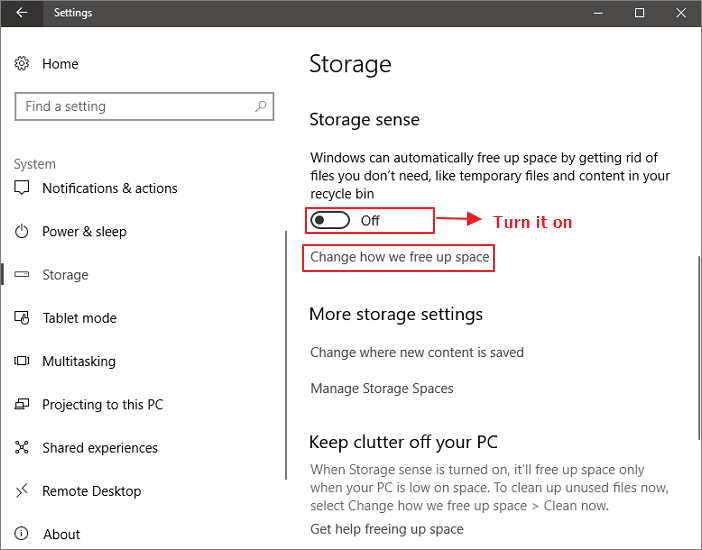
Batch computer program transfer, Windows account transfer, domain account transfer, virtual-physical machine transfer, local to cloud desktop transfer.
Technical Chat 24/7Page Table of Contents
Reviews and Awards
The Windows Server is similar to the usual Windows system; we use it daily with tweaks, including higher security features, and excels in server management. It is even easier to fill up your drives in Windows Server. That is why it is necessary to know what is in a system, taking so much space. Finding large files in your system is essential for cleaning up and freeing up space that can be used for further storing files. Here in this article, we'll discuss a few of the easiest ways you can find large files in your Windows Server 2022/2019/2016.
We will discuss three straightforward ways to help you find and locate the most extensive file on your Windows Server with minimal effort, including the most user-friendly and fastest way to locate and find the largest file in your Windows Server - using EaseUS Todo PCTrans Technician.
100% Secure
Free Inquiry
The three methods are as follows:
| Comparison | Difficulty | Suitable Users |
|---|---|---|
| EaseUS Todo PCTrans Technician | Simple interface and clear steps | Easy for all. |
| PowerShell | Hard, it requires a specific set of command lines | Suitable for experts. |
| CMD | Hard, it requires a specific set of command lines |
Suitable for experts. |
These three methods mentioned above are the easiest way to locate large files on your Windows Server. However, using PowerShell and Command Prompt might be more complex.
EaseUS Todo PCTrans Technician is a brilliant tool developed by EaseUS that can manage your data, files, and programs properly and lets you do various operations on them without any extra effort.
We will now briefly discuss how to find the most extensive file in Windows Server 2022/2019/2016 using all the methods mentioned earlier. Here's a step-by-step guide of the given strategies that you can follow to find out the biggest files on server computers:
EaseUS Todo PCTrans Technician is software that can do wonders for your Server. It has tons of features that can help you with anything that you're struggling to deal with. Designed for professionals, even an average user can use this software to boost their productivity.
It is a very cost-efficient option for professional IT workers to manage multiple PCs simultaneously. It even offers free tech support in case you need some urgent help. There are numerous features like direct transfer programs without installing the software, flexible transfer solutions between local disks, etc.
100% Secure
Free Inquiry
Step 1. Run EaseUS Todo PCTrans on your PC. Click "More Tools" on the left pane. Click "Large File Cleanup" and Click "Start" button to move on.
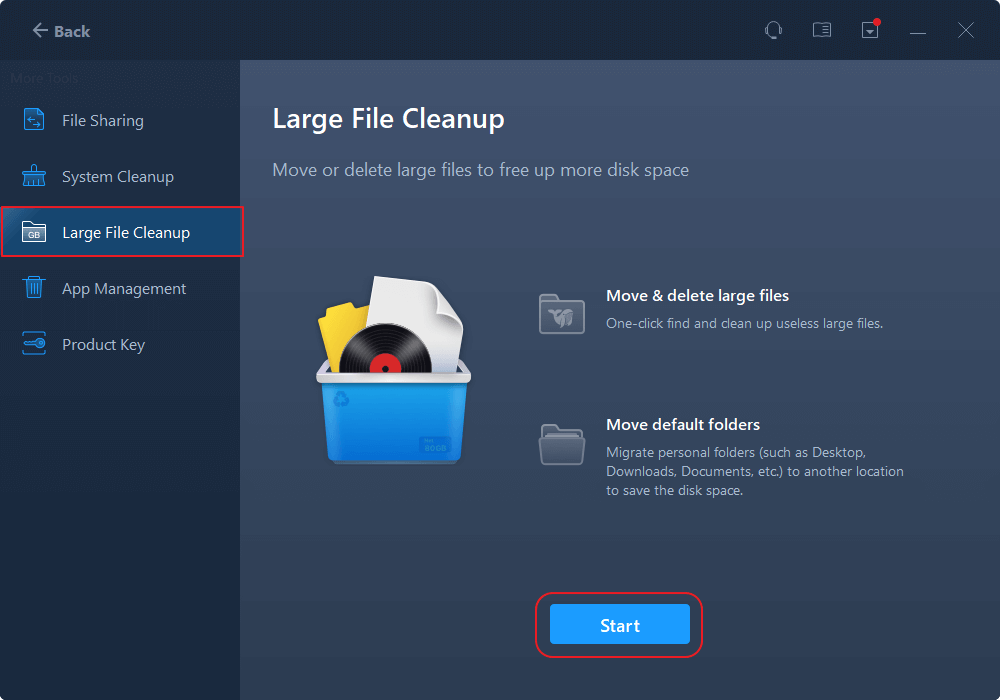
Step 2. Select the disk you want to scan, click "Scan."
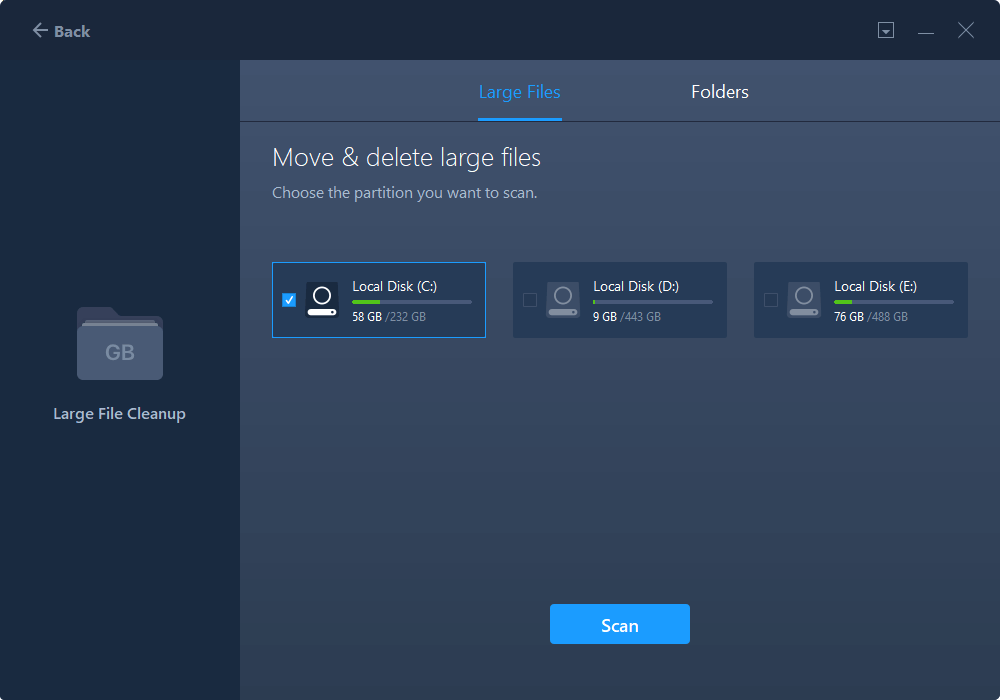
Step 3. When the scan completes, files larger than 20M will be listed. Choose the wanted files and target drive to move. (You can choose the triangle icon to select destination or click "Browse" to pick the wanted place.)
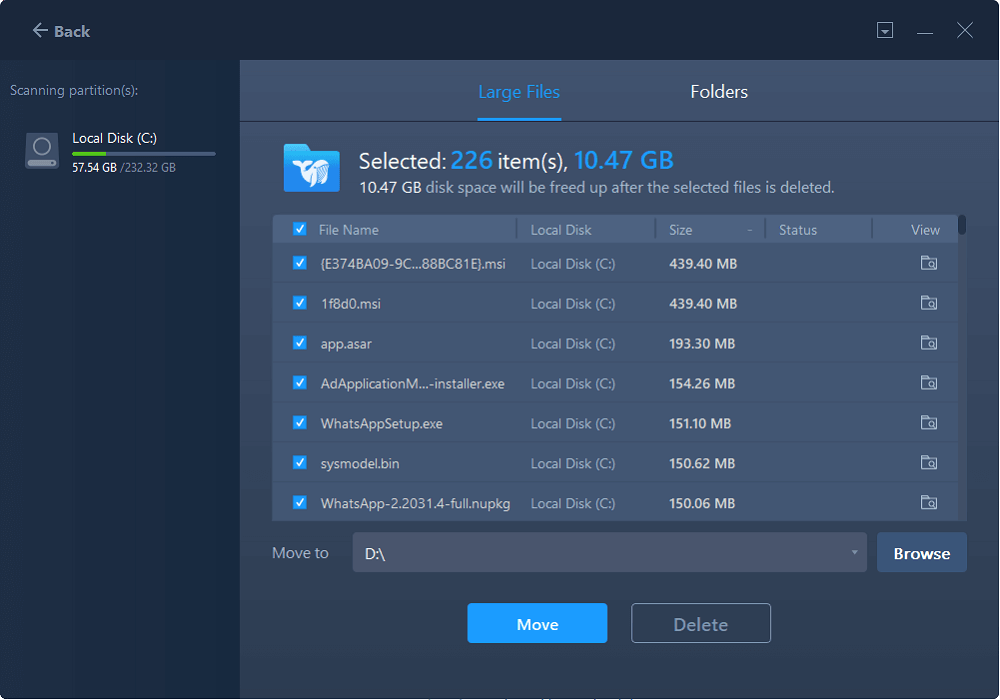
Step 4. Click "Move" button, then check files on the pop window. Then click "Move" button again.
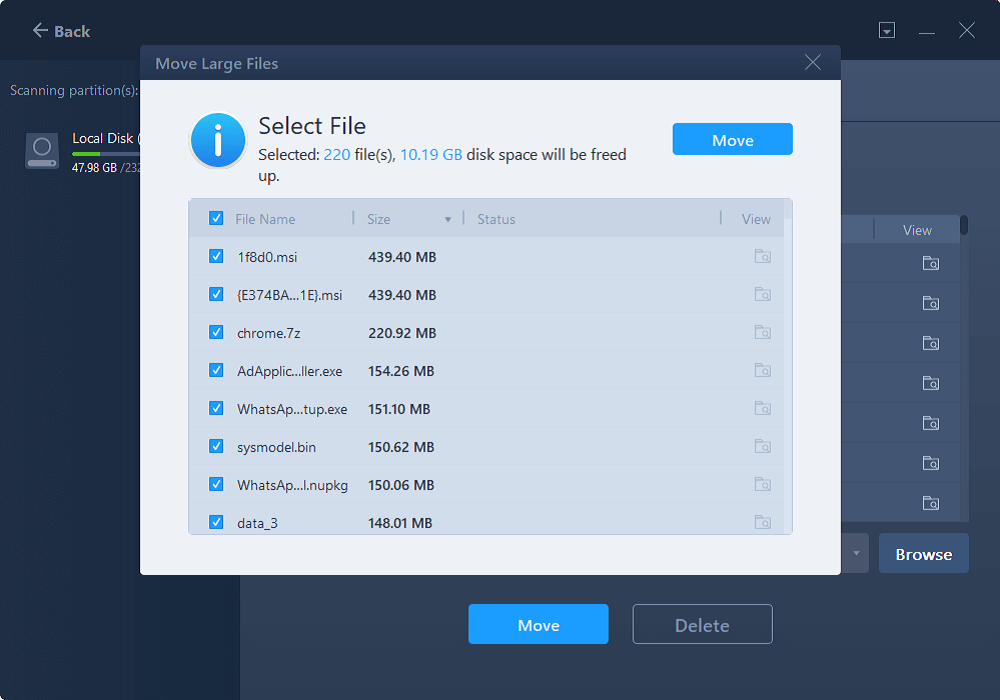
Look! 5 Ways to Clean Up Junk Files in Windows 10
How often do you delete your temporary Internet files and cookies (and why)? Delete these junk files in order to speed up your PC.
If you're a geeky person or don't want to install a third-party app on your system, then you can also use PowerShell to find the largest files in your system. Generally, it is quite a difficult task to find the largest file in your Windows Server, but with the help of PowerShell script, you can easily find the largest file in your system without any issues. Here is the step-by-step guide that you can follow to perform the action.
Step 1: Press the Windows key, and type in the search bar, "Windows PowerShell ISE." Open the PowerShell and create a new script. Click on the New File icon to create a new script or use the shortcut key Ctrl + N.
Step 2: Use this code by typing or copy-pasting it inside the PowerShell ISE editor.
Get-ChildItem $folder -recurse -ErrorAction SilentlyContinue |Sort-Object length -descending| Select-Object -first 27 @{Name="MegaBytes";Expression={"{0:F2}" -f ($_.length/1MB)}} , Fullname
Please note that: $folder = "ENTER YOUR DRIVE OR FOLDER PATH HERE."
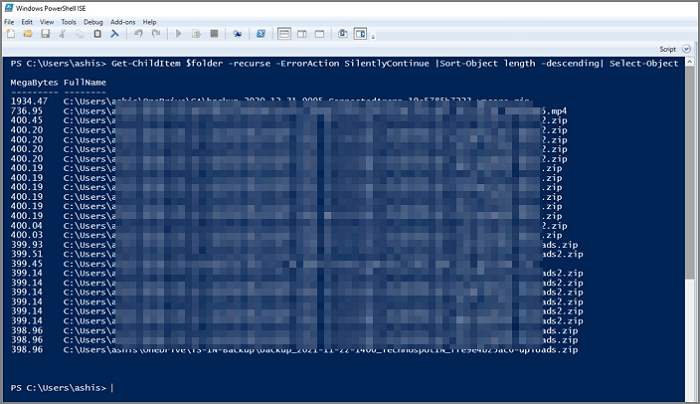
Step 3: Confirm that you're writing the correct drive name that you want to use this code to perform the action. Now run the script by pressing F5 or clicking on the green play button visible on your screen. It will take a few minutes to perform the action, so be patient. You'll get your results.
Command prompt is a powerful tool when used correctly. It allows your computer to run commands which give you the desired results. Here are the simple steps by which you can perform this action using Command Prompt:
Step 1: First, you have to open the Run utility. To open that, press the Windows + R key. Type "cmd" in the input search field and click OK.
Step 2: When the command prompt opens, please type the following command and hit the enter key to run it.
forfiles /S /M * /C “cmd /c if @fsize GEQ 1073741824 echo @path > largefiles.txt

Step 3: Once the execution is complete using this code, the command will find all the files bigger than 1 GB in size.
If you want to know more information about using EaseUS Todo PCTrans to locate large files in Windows Server, click the buttons to inquire our experts.
Batch computer program transfer, Windows account transfer, domain account transfer, virtual-physical machine transfer, local to cloud desktop transfer.
Technical Chat 24/7In this article, we've discussed three methods by which we can locate the most extensive file in our Windows Server 2022/2019/2016. These methods include using PowerShell, Command Prompt, and EaseUS Todo PCTrans Technician. All these methods are excellent and work like a charm. But if I have to give you a suggestion to do this all hassle-free, then use the EaseUS Todo PCTrans Technician software as it is the simplest method to do it with just a single click.
Apart from that, EaseUS Todo PCTrans Technician offers quite a lot of features that make your life easier and save up a lot of your precious time. It is perfect for managing and making good use of disk space with its file transfer features like PC to PC transfer, App Migration, Data backup and restore, system cleanup, product key, etc. You can even recover data from a broken dead PC using this software. Hence, it is highly recommended to give it a shot. I hope this article was helpful to you.
100% Secure
Free Inquiry
Cici is the junior editor of the writing team of EaseUS. She accepted the systematic training on computers at EaseUS for over one year. Now, she wrote a lot of professional articles to help people resolve the issues of hard drive corruption, computer boot errors, and disk partition problems.
Written by Tracy King
Tracy became a member of the EaseUS content team in 2013. Being a technical writer for over 10 years, she is enthusiastic about sharing tips to assist readers in resolving complex issues in disk management, file transfer, PC & Mac performance optimization, etc., like an expert.
EaseUS Todo PCTrans Free is a useful and and reliable software solution created to serve in computer migration operations, be it from one machine to another or from an earlier version of your OS to a newer one.
Read MoreEaseUS Todo PCTrans is by the folks at EaseUS who make incredible tools that let you manage your backups and recover your dead hard disks. While it is not an official tool, EaseUS has a reputation for being very good with their software and code.
It offers the ability to move your entire user account from your old computer, meaning everything is quickly migrated. You still get to keep your Windows installation (and the relevant drivers for your new PC), but you also get all your apps, settings, preferences, images, documents and other important data.
Read MoreRelated Articles
How to Fix Slow File Transfer in Windows 11? ⚒️
![]() Sherly/2024/12/03
Sherly/2024/12/03
How to Move User Folder to Another Drive on Windows 11🔥
![]() Tracy King/2024/11/29
Tracy King/2024/11/29
How to Move Users Folder to Another Drive [4 Ways]
![]() Jean/2024/11/29
Jean/2024/11/29
How to Transfer Data from One User Account to Another Windows 10/11
![]() Jean/2024/12/02
Jean/2024/12/02
How to Locate or Find Large Files in Windows Server 2022/2019/2016
Try smart Windows 11 data transfer tool to move all data in 1 click.
EaseUS Todo PCTrans
100% Secure
Free Inquiry
